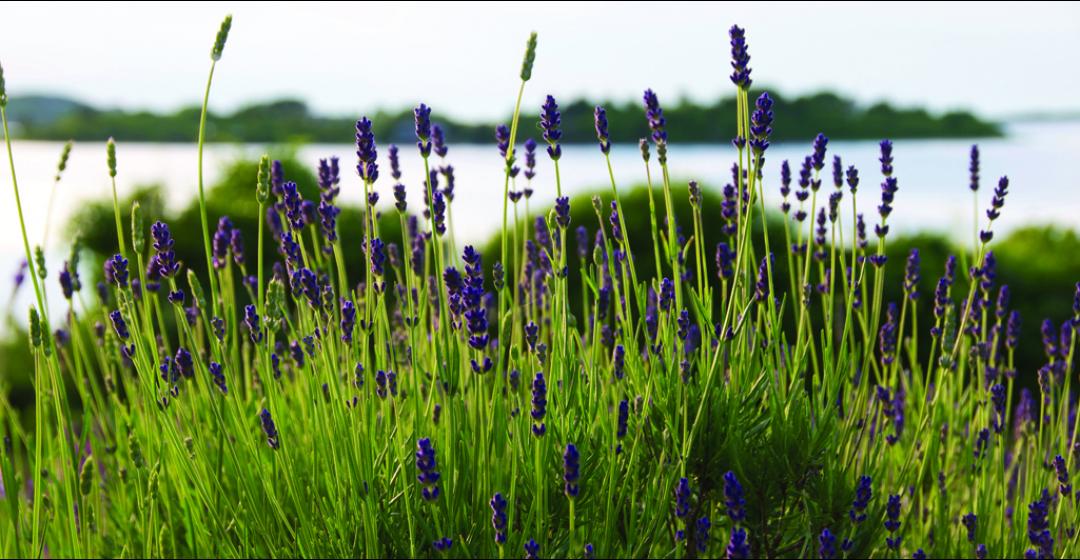You stare at that dry, sandy patch of finicky Island soil in front of your home and envision a low flowering shrub that is drought tolerant and can thrive in partial sunlight. Wouldn’t hurt if the plant were a Vineyard native, too. But you wonder, is that combination possible to find?
The answer to that all-too-common question is yes. (Black chokeberry or Virginia Rose would do the trick nicely, in case you were wondering.) Best of all, thanks to the new Martha’s Vineyard Plant Selection Guide, courtesy of the Polly Hill Arboretum, figuring out what plant will work where just got a lot easier.
With nearly a thousand plants already in the database, and more to come, anyone from a professional landscaper to a novice gardener can quickly go online to plantfinder.pollyhillarboretum.org, plug in soil type and sunlight exposure, then select from plant characteristics ranging from deer resistance to fall color to edibility. The end result is a list of plants tailored to your site’s specific needs.
The idea of creating an interactive guide for Island plant varieties has deep roots at the West Tisbury arboretum. “A lot of it goes back to Polly Hill, who started in 1958,” said Tim Boland, executive director of the Polly Hill Arboretum. “We have been accumulating knowledge about these plants over time and it’s just our way of sharing what we have learned.”
It wasn’t until July of 2013, however, when Erin Hepfner was brought on to the Polly Hill team, that the guide became a reality. Originally hired as a part-time employee, Hepfner took over and ultimately domesticated a sprawling data file that had been periodically worked on by past interns and volunteers. She continued to enter plants, of course, but perhaps more important, she assigned each plant a thorough list of characteristics, made sure the scientific names were correct, and categorized each plant for Island appropriateness. The outcome is a comprehensive checklist that allows people to be specific or non-specific with their selection process.
“I think that is the beauty of it,” said Hepfner recently. “You can select something from just about every major topic. Then as many characteristics as you want.” You can start out looking for a drought-tolerant native tree, for instance, but with the site you can push the limits to include that the tree must be fragrant and have a nice shape.
“The point of this is to take the guesswork out of finding the best plants for your projects,” said Hepfner. “It also lets you take a well-informed shopping list to the garden center or nursery.”
Although the site does not currently offer photographs of each plant, the goal is to add them soon. “We have a lot of the photos, but we just have to get them there,” said Hepfner. It’s just a matter of finding a volunteer to chip away at it. Boland added that he hopes in the future to include photographs that show not just an example of the plant in question but also showcase a smart design use of the plant in a landscape.
For now, if you’re interested in a certain plant and are wondering what it will look like in the next twenty to thirty years, look for the designation “Cultivated at Polly Hill Arboretum” under the plant’s characteristics. If it’s there you can visit the arboretum to determine whether you’re thinking of planting that tree a little too close to your house.
Though the site encourages the use of native and non-invasive plants, you needn’t worry that the experts at Polly Hill are trying to dictate the types of plants you choose for your landscape. That is not their intention, and there are non-native species in the database. The guide is meant instead to help you choose the right plants for your landscape requirements, while letting your personal style prevail through the selection process. “We’re not trying to limit their options,” said Hepfner. “We are letting them be the gardeners they want
to be.”
From the Polly Hill Plant Finder
Lavender
Plant Type: Perennial
Soil Moisture: Dry, Moderate
Sunlight: Sun
Native Region: Non-Native
M.V. Designation: Island Appropriate
Plant Characteristics: Cultivars Available, Cultivated at Polly Hill Arboretum, Deer Resistant, Drought Tolerant, Flowers, Fragrant, Rabbit Resistant, Wildlife
plantfinder.pollyhillarboretum.org





